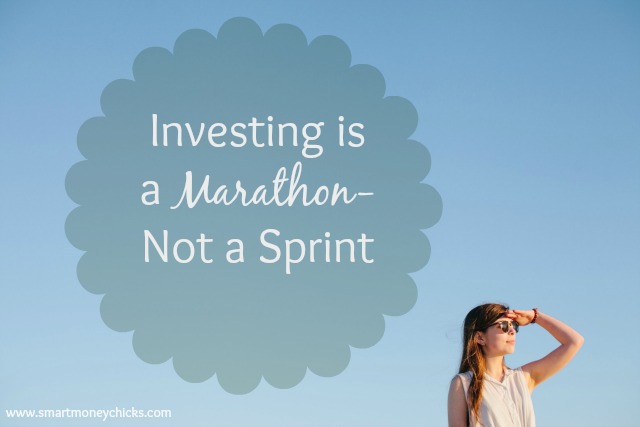 Every January, we set goals for the New Year in hopes that achieving these goals will improve our lives. I’ve always taken more of a long term approach to my goals, but I use such times to track where I am on the path to reaching my goals. As a long time runner, tracking goals and gauging your progress has been engraved in me beginning at the age of 10. I’ve ran every distance from a 400 meter sprint to a marathon that took three dedicated months to train for. What I’ve learned from my experience as a runner is that, implementing the same mindset that a distance runner must use to train for a race can help you develop strategies to achieve your financial goals. Rather than choosing an unrealistic length of time to achieve a goal, think about your life years down the road and how you want to be living.
Every January, we set goals for the New Year in hopes that achieving these goals will improve our lives. I’ve always taken more of a long term approach to my goals, but I use such times to track where I am on the path to reaching my goals. As a long time runner, tracking goals and gauging your progress has been engraved in me beginning at the age of 10. I’ve ran every distance from a 400 meter sprint to a marathon that took three dedicated months to train for. What I’ve learned from my experience as a runner is that, implementing the same mindset that a distance runner must use to train for a race can help you develop strategies to achieve your financial goals. Rather than choosing an unrealistic length of time to achieve a goal, think about your life years down the road and how you want to be living.
Walk before you can run.
Having been a sprinter for years, I began my marathon training fresh out of college relatively inexperienced in the long distance field. I began by running only 3 miles and gradually increasing the distance over time. In the running world, we call this “building a base”, and it is the first step of investing.
Starting small and making investing a regular commitment has a potential to build a sizable portfolio over time. I began investing at a young age by investing fifty dollars per month. At the time, this is what was affordable to me, and as my situation changed, I increased my contributions. I believe that if I continue these habits I will increase my chances of retiring comfortably regardless of whether social security is still around. I will also be able to help out my future child with their college tuition because I took the small steps to start now. I also believe that because of my propensity to exercise and to eating healthy, I will more than likely live a longer life than many and need to save more to enjoy these well-earned golden years.
Be Proactive.
First and foremost, it is a generally agreed-upon statement that it is important to save at the very minimum three months worth of living expenses for emergencies before you begin investing. It can be detrimental to reaching your goals if you have to take from your investments when your car suddenly breaks down. As a runner, I stretch after a workout to prevent future injuries. This is just like the concept of the emergency fund.
Check your progress over time.
A new year is a nice time to check your progress. For me, this means reviewing my accounts to check if I am on track and reviewing my annual budget to see if an increase in pay means an increase in the amount I can invest. Checking your net worth, your assets minus liabilities, can be one of the ways to check your overall financial health. Many investors strive to increase this figure from one year end to the next. For my running I use January to review past years results to see how far I’ve come.
Seek out Guidance.
Finally, make sure to do your homework on investments or work with someone who is qualified to do so. Each investment should be specific to you, your goals, and your tolerance to risk. In the running world, this can mean that I am not going to measure myself against others performance. I am not going to try to run a marathon at 6:45 minute mile pace like my former teammate. She is a different person than me with different goals, and a different (faster) body than mine. I know what I am capable of and I know what “pace” is appropriate for me. When training, I follow a training plan set up specifically for me, it maps out what I need to do to reach a certain goal. This is exactly what we do as financial planners for our clients. Progress is measured against YOUR goals and a plan is specifically designed for you to reach them.
 About Kelcie: I have been working in the financial services industry since graduating from DePaul University’s college of business in Chicago where I majored in finance. I also competed in the Big East as a track athlete and I continue to run today as a hobby. After college, an internship for a financial planner eventually led me to my job in Murfreesboro at Ross Financial Planning as an associate advisor. I look forward to getting more involved in 2014 and to helping others reach their financial goals. I also enjoy educating others about financial matters; this led me to meeting Andrea in Atlanta in 2013 at a Smart Money Chicks group meeting.
About Kelcie: I have been working in the financial services industry since graduating from DePaul University’s college of business in Chicago where I majored in finance. I also competed in the Big East as a track athlete and I continue to run today as a hobby. After college, an internship for a financial planner eventually led me to my job in Murfreesboro at Ross Financial Planning as an associate advisor. I look forward to getting more involved in 2014 and to helping others reach their financial goals. I also enjoy educating others about financial matters; this led me to meeting Andrea in Atlanta in 2013 at a Smart Money Chicks group meeting.
Andrea is the Chief Chick of Smart Money Chicks. After filing BK twice (once because she panicked, second time because the pro messed the first time up), she realized that it all could have been avoided if she understood more about how her Finances worked and the options available. At that point, she wanted to help as many as she could never make the same mistakes again. Our Promise is that all the content you read on here is created or edited by Andrea